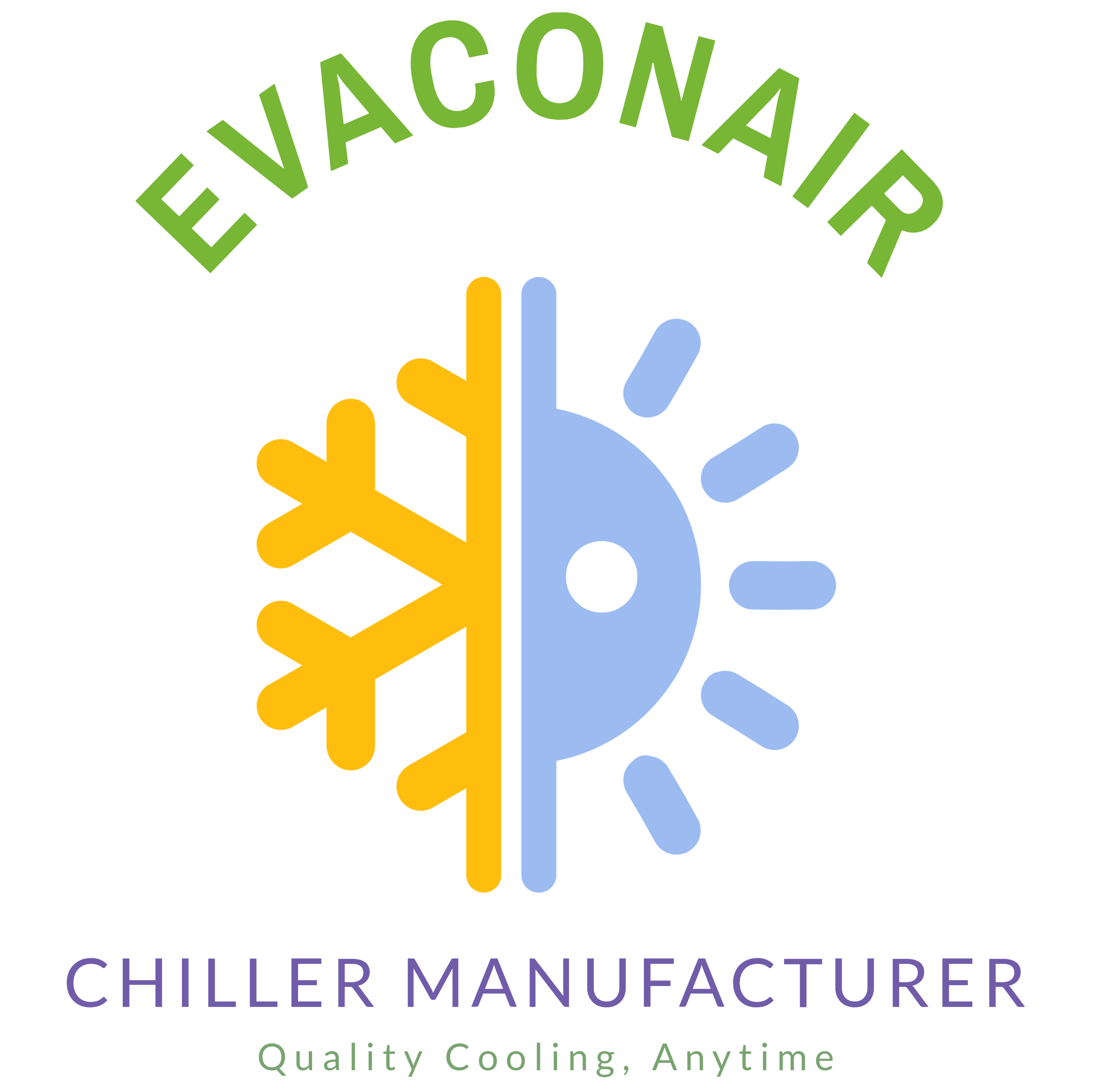Blog
What is Chiller Operation?
Chiller operation refers to the process by which a chiller system functions to remove heat from a liquid, typically water, which is then circulated to cool equipment, processes, or air within a facility. The efficient operation of a chiller is crucial for maintaining optimal temperatures in various industrial and commercial settings. Chillers are widely used in industries such as plastics, HVAC, food processing, and pharmaceuticals.
Key Components in Chiller Operation
- Evaporator: The operation starts in the evaporator, where the refrigerant absorbs heat from the process fluid (usually water). As it absorbs heat, the refrigerant evaporates and transforms into a gas.
- Compressor: The gas is then compressed by the compressor, increasing its pressure and temperature. This step is vital as it prepares the refrigerant for heat rejection.
- Condenser: In the condenser, the high-pressure gas releases the absorbed heat to the surroundings, either through air (in an Air-Cooled Water Chiller) or water (in a Water-Cooled Water Chiller). The refrigerant then condenses back into a liquid.
- Expansion Valve: The liquid refrigerant passes through the expansion valve, where its pressure is reduced, cooling it down before it re-enters the evaporator to start the cycle again.
How to Operate a Chiller System
Operating a chiller system involves several steps to ensure it runs efficiently and effectively:
- Pre-Operation Checks
- Inspect the chiller for any signs of damage or wear, especially in components like the Mold Temperature Controller.
- Ensure that all connections, including those for auxiliary equipment like Hot Air Dryers and Vacuum Hopper Loaders, are secure.
- Startup Procedure
- Turn on the control panel and verify that all system indicators are functioning correctly.
- Start the chiller by pressing the appropriate button on the control panel, which will initiate the refrigeration cycle.
- Monitor the initial temperature and pressure readings to ensure they fall within the expected range.
- Monitoring During Operation
- Continuously monitor the system’s performance by checking the temperature and pressure levels displayed on the control panel.
- Ensure that the flow rates of chilled water and refrigerant are within the recommended limits to avoid operational issues.
- Listen for any unusual noises that might indicate mechanical problems with the chiller or related equipment like the Dehumidifier.
- Shutdown Procedure
- Gradually reduce the load on the chiller before shutting it down to prevent sudden pressure changes.
- Turn off the chiller system following the manufacturer’s guidelines, ensuring that all components come to a complete stop.
- Perform a post-operation inspection to check for any signs of wear or required maintenance.
Importance of Proper Chiller Operation
Efficient chiller operation is essential for maintaining the longevity of the system and ensuring that the cooling process is effective. Proper operation also helps in minimizing energy consumption, reducing operational costs, and avoiding unexpected downtime due to equipment failure. Working with Chiller Manufacturers In Ahmedabad or Chiller Dealers In Ahmedabad can provide you with expert advice on the best practices for operating your specific chiller system.
Conclusion
Understanding chiller operation is key to ensuring that your cooling system runs smoothly and efficiently. Whether you’re using an Air Cooled Screw Chiller or a Water Cooled Screw Chiller, following the proper operating procedures will help you achieve optimal performance. For more detailed information on operating and maintaining your chiller, visit our products page.
